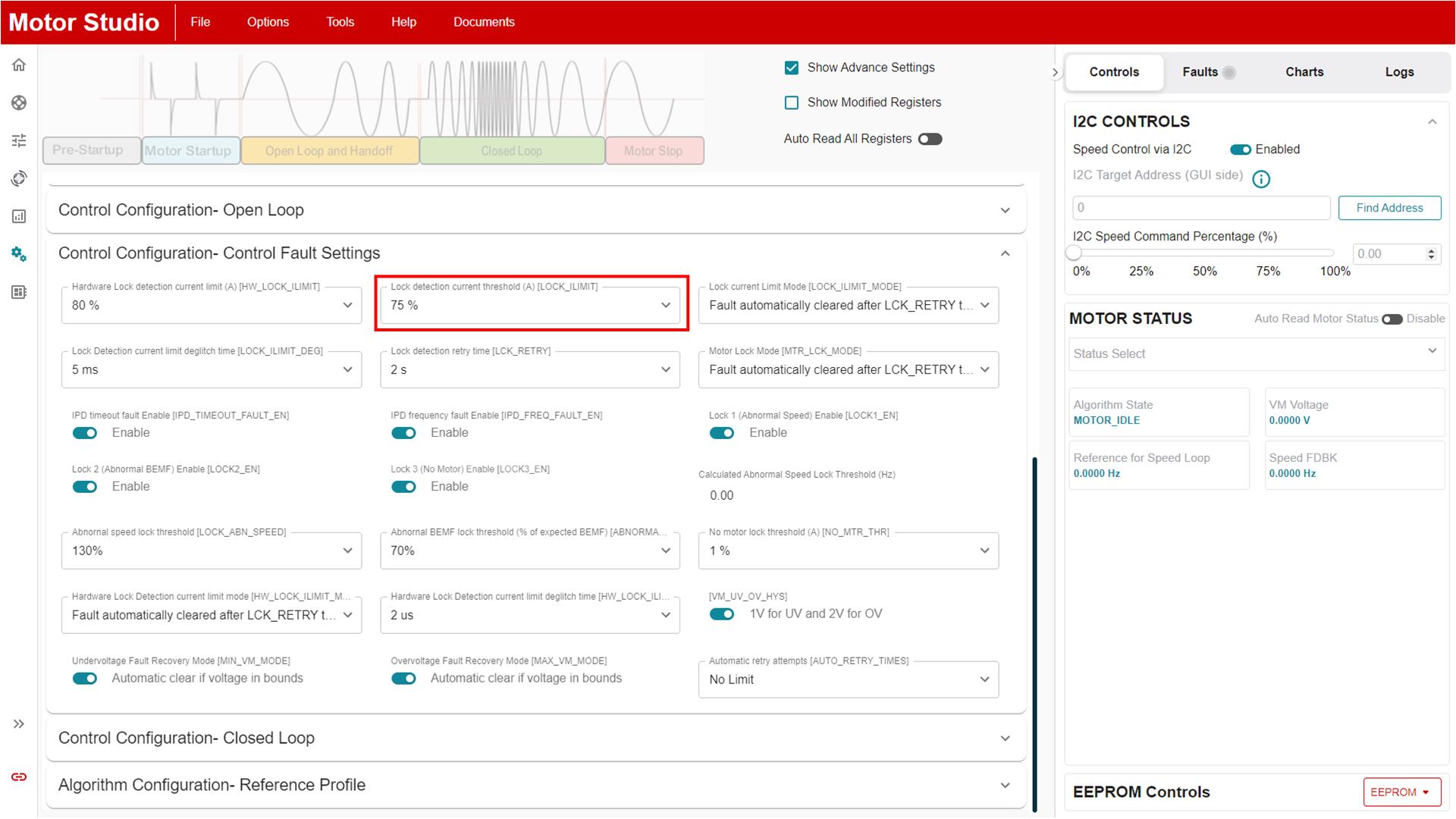SLLU374 November 2024 MCF8329A
6.3 Lock Current Limit [LOCK_LIMIT]
This fault gets triggered when the phase current exceeds the LOCK_ILIMIT threshold. If this fault is triggered, check the motor data sheet for stall torque and load the motor below the stall torque specified in the data sheet. If the load torque is still within the stall torque, go to the Control Fault Settings tab in the Advanced Tuning page and increase the value of LOCK_ILIMIT.
 Figure 6-4 LOCK_ILIMIT
Figure 6-4 LOCK_ILIMIT